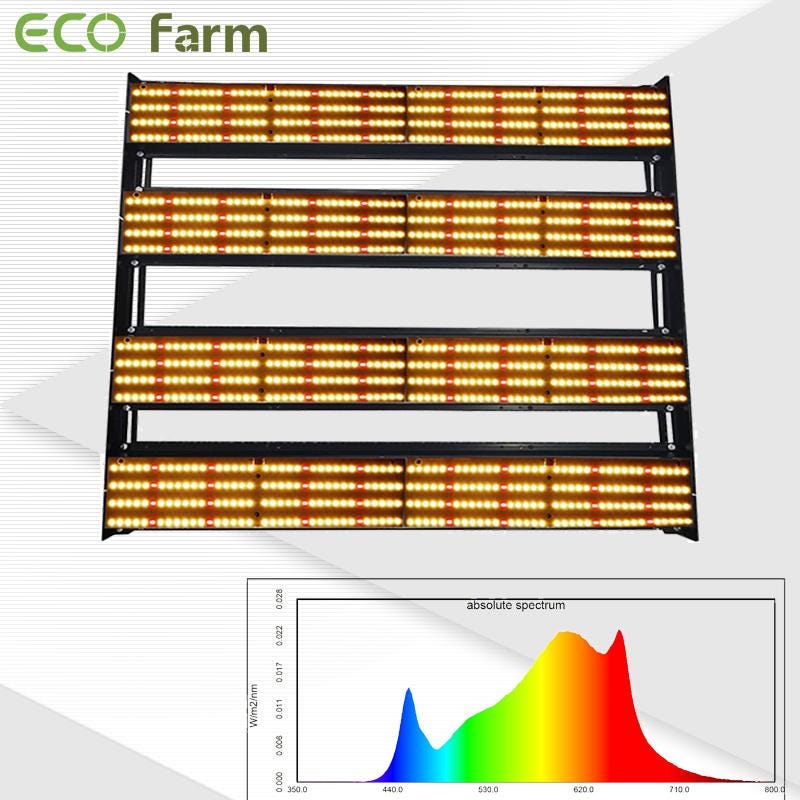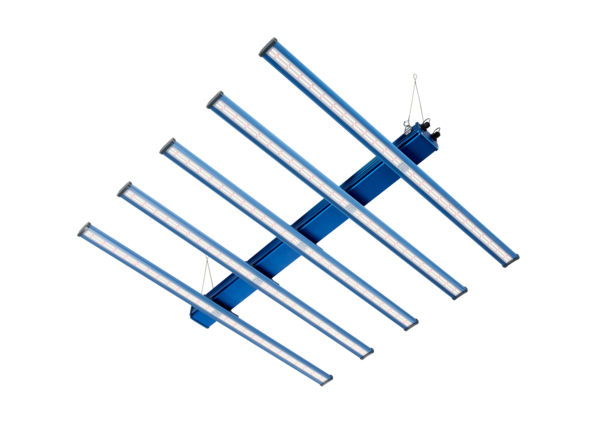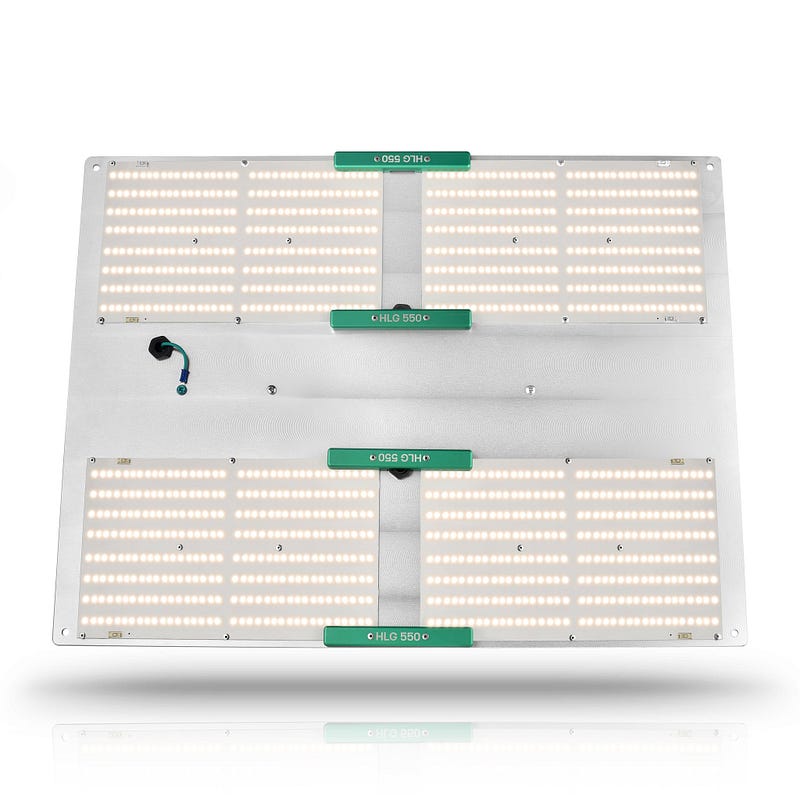- Home
- SHOP ECO FARM
-
TOP BRANDS
-
Grow Lights Brands
- Adjust-A-Wing
- Apollo Horticulture
- Bestva
- Black Dog LED
- California Lightworks
- ChilLED Grow Light
- Eco Farm
- HLG - Horticulture Lighting Group
- Kingled
- Kind LED
- Mars Hydro
- Morsen
- Neilo
- NextLight
- Phlizon
- PlatinumLed
- Roleadro
- Optic LED Grow Lights
- ViparSpectra
- Vivosun
- EYE Hortilux
- IPOWER
- NanoLux
- Phantom grow light
- Gavita grow lights
- Grower's Choice
- Lumatek
- Maxibright
- Yearld Pro
- ThinkGrow
- Crecer Lighting
- Green Sunshine Electric Sky
- fohse aries
- loriflux
- luxx
- fluence
- iluminar
- Lex
- LTC
- Rayonled
- FGI
- PHOTONTEK
- Grow Tents & Kits Brands
- Extraction & Harvest Brands
- Climate Control & Hydroponic Brands
-
Grow Lights Brands
- COMPANY INFO
- COOPERATE WITH US
- Blog
- Sign in
- Home
-
SHOP ECO FARM
- ECO Farm Grow Lights
- ECO Farm LED Grow Lights
- ECO Farm Quantum Board
- ECO Farm Samsung LED Grow Lights
- ECO Farm COB Grow Lights
- ECO Farm Commercial Lights
- ECO Farm Supplemental Grow Light
- ECO Farm Fluorescent grow lights
- ECO Farm HPS & MH Grow Lights
- ECO Farm CMH Grow Lights
- ECO Farm HID/CMH Bulbs & Ballasts
- ECO Farm Grow Tents & Kits
- ECO Farm 2x2ft Grow Kits
- ECO Farm 3x3ft Grow Kits
- ECO Farm 3.3x3.3ft Grow Kits
- ECO Farm 4x4ft Grow Kits
- ECO Farm 5x5ft Grow Kits
- ECO Farm Grow Tent - Standard Style
- ECO Farm Grow Tent - Extension & Roof & Lodge Style
- ECO Farm Extraction & Harvest
- ECO Farm Rosin Press Machine
- ECO Farm Dry & Wet Trimmers
- ECO Farm Oil Accessories
- ECO Farm Medicinal Plants Grinder
- ECO Farm Medicinal Plants Containers
- ECO Farm Medicinal Plants Dryer
- ECO Farm Refrigeration Dryer
- ECO Farm Climate Control & Other Accessories
- ECO Farm Inline Duct Fans
- ECO Farm Oscillating Fans
- ECO Farm Exhaust Fans
- ECO Farm Air Filter
- ECO Farm Duct Muffler
- ECO Farm Ventilation Kits
- ECO Farm Plant Humidifiers
- ECO Farm Plant Dehumidifiers
- ECO Farm Hydroponic Accessories
- ECO Farm Other Accessories
- ECO Farm Hydroponics Microscopes
-
TOP BRANDS
- Grow Lights Brands
- Adjust-A-Wing
- Apollo Horticulture
- Bestva
- Black Dog LED
- California Lightworks
- ChilLED Grow Light
- Eco Farm
- HLG - Horticulture Lighting Group
- Kingled
- Kind LED
- Mars Hydro
- Morsen
- Neilo
- NextLight
- Phlizon
- PlatinumLed
- Roleadro
- Optic LED Grow Lights
- ViparSpectra
- Vivosun
- EYE Hortilux
- IPOWER
- NanoLux
- Phantom grow light
- Gavita grow lights
- Grower's Choice
- Lumatek
- Maxibright
- Yearld Pro
- ThinkGrow
- Crecer Lighting
- Green Sunshine Electric Sky
- fohse aries
- loriflux
- luxx
- fluence
- iluminar
- Lex
- LTC
- Rayonled
- FGI
- PHOTONTEK
- Grow Tents & Kits Brands
- Apollo Horticulture
- Black Box
- CoolGrows
- Eco Farm
- GrowLab
- Gorilla Grow Tents
- Mars Hydro
- Quictent
- Secret Jardin
- Unit Farm
- TopoGrow
- VIVOSUN
- Topolite
-
COMPANY INFO
-
COOPERATE WITH US
- Blog
Best LED Grow Light for 6x8ft Grow Room 2021 Update
April 08, 2021
This question is important for two reasons.
First, the answer tells you what type of LED light you need. If your plants will be spending their whole lives in this tent, you may want a variable spectrum LED that allows you to adjust the light spectrum between each phase of growth. Or, at the very least, a full spectrum led grow light that can fulfill their needs in any stage.
Second, plants in the vegetative phase need about half as much light intensity as they require for flowering
How Many Plants Can I Grow
In general, each cannabis plant you grow requires at least 1sq ft of space.After germination, I like to place one plant in a large 5-gallon fabric container, which has a diameter of roughly 1 sq foot.My plant will stay in this pot until it flowers.This allows the plant to grow big and strong without other plants or tent walls obstructing its progress.Using this as a guideline, I would be able to grow between 1–6 plants in my example above.Most LED grow lights usually be able to cover about 1- 6 plants.
Watts per square foot
To grow marijuana, you want between 30 and 40 watts per square foot of grow space. Of course, more wattage will give you larger yields (within reason) and less wattage will result in smaller yields.
NOTE: We are using the actual power here not the rated power. LED diodes are never run at full power, as this would considerably shorten their life. A 3-watt chip for example, will only run at approximately 60% of full power.
So if a fixture has two hundred 3-watt diodes, it is technically capable of producing 600 watts of power, but it will actually only draw about 300 to 400. Most amazon product will list the rated power (600 watts), but this is obviously a bit misleading.
Total power needed=grow area in sq ft*30W sq ft (to 40W/sq ft)
So For 6*8 area (48 sq ft)
48 sq ft*30W sq ft =1440watts
48 sq ft*40W sq ft =1920watts
So, continuing the example from above, 6*8 grow room need between 1440 and 1920 watts of actual LED power
Compare PPFD Levels of LED Grow Lights
You can find in-depth information on PPFD metrics here. In the meantime, we’ll lay it out as simply as we can.
PPFD tells you how much photosynthetically active radiation (PAR) actually reaches the canopy from a specific hanging distance. This is a measurement of the amount of usable light that makes it from the lamp to the leaves.
For healthy, flavorful plants, follow this guide:
- Seedings and clones: 200–400 PPFD
- Vegetation: 400–600 PPFD
- Budding and flowering: 600–900 PPFD
You can see why it’s important to decide whether you want to dedicate your grow tent to a specific stage or the entire cycle. When you check the specifications of an LED grow light, make sure the light can provide:
- The PPFD level your plants need
- A large enough coverage area to ensure the entire canopy receives quality light
It is also important to note that PPFD depends on the hanging height of your lights. Light quality diminishes farther from the lamp. A PPFD measurement refers to the amount of PAR available at a specific distance from the fixture. So when you look at PPFD specs, note the distance at which that measurement has been taken.
Let me introduce the full-spectrum LED grow light of actual power on the market.
ECO Farm 480W V3Pro Samsung LM301H Movable LED Grow Light

【FULL SPECTRUM GROW LIGHT】Full spectrum Samsung LM301H 3500K +660nm Red suitable for all stages of indoor growth providing like sun quality full spectrums for rapid plant response from vegging to flower.
【MAXIMIZE YIELD & OPTIMAL QUALITY】Compared with other LED grow light, illuminated area of this light is 6% larger, reaching an incredible size 5x5ft for veg and 4x4ft for bloom. The most efficient Samsung LM301H LED technology provide light output PPF up to 1262μmol/s, high energy efficiency at 2.6umol/J.
Item:480W V3Pro
Spectrum:LM301H 3500K + Epistar 660nm
Led Diodes:1024PCS LM301H +192PCS 660nm Epistar
Total Led Quantity:1216PCS
Power:480W MeanWell Driver HLG-480H
Voltage Range:100–277V
Photon Efficacy:2.6µmol/Joule
Lamp Luminous Flus (Lm):76800Lm
Efficiency:160Lm/w
Total output — PPF:1262μmol/s
PPFD at 40CM:1923μmol/m2/s
Flowering Footprint (coverage):4*4ft
Veg Footprint (coverage):5*5ft
Collor temperature (K):3500K
Frequency:50/60Hz
Color Rendering Index (CRI): >80Ra
Electric current intensity:2100mA
Dimensions:58.5 x 58.5 x 3cm
Lamp weight:8
Single package size:65cmx12.5cmx65cm
Single gross weight:10kg
The actual power of this product is 480W, if it is used in a 6*8 grow room, 4PCS ECO Farm 480W V3Pro Samsung LM301H Movable LED Grow Light is required
Maxibright Daylight LED 480w Pro Grow Light

Introducing an exciting new addition to the DAYLIGHT LED range, the DAYLIGHT 480W LED PRO, for growers looking for higher outputs and greater yields in a more compact and versatile unit. This fixture boldly bridges the gap between the higher and lower powered units in the range, meaning they’re adaptable to a wide range of applications such as propagation, multi-layer gardening and grow tents/rooms. The ability to dim the fixture from 25% up to 100% power, means you can use it from the early stages of growth right through to flowering.
- Produces intense, full-spectrum light that your plants will love
- Total fixture efficiency of 2.7 μmols per watt
- Gives you a “red heavy” spectrum, allowing your crop to pile on huge weight during the flowering stage
- Dimmable from 100% down to 25% without the need of an additional controller
- IP65 ingress protection
- Hits your plants with light from many directions and angles to maximise yields
- Represents exceptional value for money — amazing bang for buck
- Supplied dismantled so that it can fit through tight spaces (up loft hatches, etc.)
- Built with super-efficient Lumiled and Osram LEDs
- “Spider” design gives the best (most uniform) light spread possible
- Passive heatsink cooling — no fans
- Optimised to produce the goods in a 1.2m x 1.2m grow tent
- Very low profile — great for those with little headroom
- Easy to assemble unlike other similar LEDs on the market
- Total PPF of 1296 µmols per second
- Has a whopping 50,000 hour life-span (equivalent to 11.42 years on a 12/12 cycle)
- 3 Years Manufacturer’s Warranty
The actual power of this product is 480W, if it is used in a 6*8 grow room, 4PCS Maxibright Daylight LED 480w Pro Grow Light is required
Horticulture Lighting Group LED Grow Light High efficiency HLG-550 V2 Quantum Board

HLG 550 V2 (Version 2) Rspec indoor horticulture LED Lamp is designed to replace a single-ended 1000W HID. Each lamp uses 4 custom designed Ultra Efficient white light Quantum Boards with deep red. The new R-Spec spectrum will enhance flowering while still being a great all-around light from seed to harvest. The HLG-550 Rpsec with its 1088 Highest Bin Samsung LM301B LED’s and 64 deep red diodes is the one of the most efficient grow lights on the market. Enjoy lower energy cost, less heat, and more output.
The V2 Rspec produces 1257 PPF with just 480 Watts!
- Adjustable Power Output: 240–480 Watts
- HID Equivalent: SE 1000 Watts
- LED’s: 1088 Highest Bin Samsung LM301b Diodes + 64 Deep Red Diodes
- V2 Rspec Total Output: 1257 PPF
- V2 Rspec System PPF Efficiency: 2.6 µmol/Joule (Independent Test Results)
- Coverage Area:
- Flower: 4.5' x 4.5' or 4' x 5' at 24"
- Recommended Hanging Height: 24–32 Inches Above Canopy
- Cooling: Passive Cooling
- Dimensions: 26” x 20” x 3”
- Input Voltage Range: 90–277 VAC
- Finish: Red Anodized Aluminum
The actual power of this product is 480W, if it is used in a 6*8 grow room, 4PCS HLG-550 V2 Quantum Board is required
Understanding Light Cycles
Plants have evolved to grow well under light cycles that the Earth provides them outdoors. Long bright summer days and shorter less bright Fall and Spring Days. This is why it is best to replicate these light cycles when growing indoors. The following light cycles are recommended (by growth phase):
- Seedling/Clone Phase: 16+ hours on, 8- hours off
- Vegetative Phase: 18 hours on, 6 hours off
- Flowering Phase: 12 hours on, 12 hours off
A change in the light cycle will actually help trigger the plant to move on to the next growth phase, specifically from Vegetative to Flowering. It’s also important to keep in mind that some plants react poorly to interruptions in their light cycles. Turning a light on in the middle of a dark phase, perhaps to check on your crops, can be detrimental to overall yield and should be avoided.
Also in Indoor Grow LED Grow Light
HLG Greenhouse Pro HE HV 630W LED Grow Light VS Geeklight grow light 480W hydroponic led grow light
October 20, 2023
